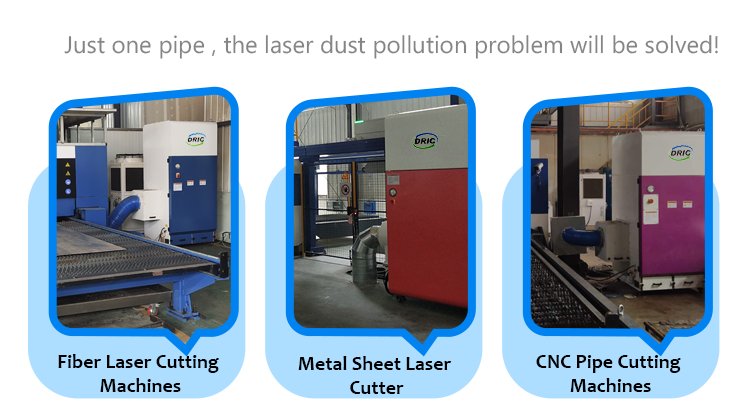Introduction
When operating industrial laser cutting machines, controlling dust, fumes, and smoke is critical for workplace safety and equipment longevity. A high-quality laser dust collector ensures efficient extraction of gas and smoke from an industrial laser cutting machine, improving air quality and compliance with environmental regulations. This guide will help procurement specialists select the best plasma cutting fume extraction system by evaluating key features, benefits, and industry standards.
Why You Need a Laser Dust Collector
Industrial laser and plasma cutting generate hazardous airborne particles. Without proper filtration, these contaminants can:
Damage machinery – Clogged systems reduce efficiency and increase maintenance costs.
Harm worker health – Prolonged exposure to fumes may cause respiratory issues.
Violate regulations – Non-compliance with OSHA and EPA standards leads to fines.
A laser dust collector effectively captures and filters extraction gas and smoke from an industrial laser cutting machine, ensuring a cleaner, safer workspace.
Key Features of an Effective Laser Dust Collector
1. High-Efficiency Filtration System
The best systems use HEPA or cartridge filters to trap fine particles, including those from plasma cutting fume extraction. Look for:
MERV 15+ rating for superior filtration.
Automatic filter cleaning to reduce downtime.
2. Strong Airflow Capacity (CFM)
Match the laser dust collector's CFM (cubic feet per minute) to your machine's output. Higher CFM ensures better extraction of gas and smoke from an industrial laser cutting machine.
3. Durable Construction
Stainless steel or heavy-duty metal housing resists corrosion.
Spark arrestors prevent fire hazards in plasma cutting fume extraction.
4. Easy Maintenance
Quick-release filters for fast replacement.
Dust disposal systems (e.g., bins or compressed air cleaning).
How to Choose the Right Laser Dust Collector
1. Assess Your Cutting Machine's Requirements
Laser type (CO₂, fiber, or plasma).
Cutting material (metal, plastic, etc.).
2. Consider Workspace Size
Larger facilities may need centralized laser dust collector systems, while smaller shops can use portable units.
3. Check Compliance Standards
Ensure the system meets:
OSHA (worker safety).
EPA (emission control).
NFPA (fire safety).
Top Applications of Laser Dust Collectors
Metal fabrication – Removes fumes from welding and plasma cutting fume extraction.
Automotive industry – Keeps air clean during laser engraving.
Aerospace manufacturing – Ensures precision cutting without contamination.
Conclusion
Investing in a high-performance laser dust collector is essential for maintaining a safe, efficient, and compliant workspace. Whether you need extraction of gas and smoke from an industrial laser cutting machine or a robust plasma cutting fume extraction solution, selecting the right system will improve air quality and operational efficiency.
Need expert advice? Contact us today for a customized recommendation!
Request Quote
Tell us your inquiry, we will recommend a suitable product model or solution for you!





